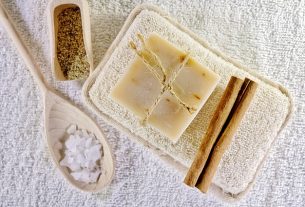Lawn care and landscaping professionals emphasize that mulching is a fundamental practice for maintaining healthy turf and enhancing garden aesthetics. Mulch, whether organic like leaves or compost, or inorganic like rubber, helps regulate soil temperature, conserve moisture, and inhibit weed growth. Selecting the appropriate type of mulch for your soil type and local climate is essential to maximize these benefits. A 2 to 4-inch layer of mulch around plants prevents issues like nutrient imbalances from excess mulch. Edging is equally vital in defining clear boundaries between the lawn and other areas, which not only improves visual appeal but also aids in effective lawn maintenance by preventing unwanted grass growth. Regular edging and mulching, combined with seasonal upkeep such as weed removal and reapplying mulch, are key to achieving a thriving landscape year-round, making these practices central to comprehensive lawn care and landscaping strategies for maintaining a healthy and well-defined outdoor space.
Effective lawn care and landscaping hinge on strategic practices such as mulching and edging, which not only enhance aesthetic appeal but also promote plant health. This article delves into the nuances of these vital lawn maintenance tasks, offering insights into ‘Understanding Mulch: Types, Benefits, and Best Practices for Lawn Care and Landscaping,’ mastering ‘Mastering the Art of Edging: Techniques and Tools to Define Your Lawn’s Boundaries in Lawn Care and Landscaping,’ and combining these techniques in a comprehensive approach. Tailored guidance awaits those seeking to cultivate a lush, well-defined lawn.
- Understanding Mulch: Types, Benefits, and Best Practices for Lawn Care and Landscaping
- Mastering the Art of Edging: Techniques and Tools to Define Your Lawn's Boundaries in Lawn Care and Landscaping
- Combining Mulching and Edging: A Comprehensive Approach to Maintaining a Healthy Lawn in Lawn Care and Landscaping
Understanding Mulch: Types, Benefits, and Best Practices for Lawn Care and Landscaping

Mulching is a cornerstone practice in effective lawn care and landscaping, offering myriad benefits to the health and appearance of your turf. Organic mulches, such as composted leaves or grass clippings, retain soil moisture, suppress weeds, and add vital nutrients to the soil as they decompose. Inorganic options like rubber or plastic mulch can manage soil temperature and reduce weed pressure without introducing organic matter. Understanding the type of mulch suitable for your lawn’s soil type, climate, and vegetation is key. For instance, a well-draining soil may benefit from a mulch that retains moisture, whereas a sandy soil might need a more water-retentive mulch to maintain soil moisture levels.
Best practices for mulching in lawn care and landscaping involve applying a 2 to 4-inch layer of mulch around plants, being careful not to pile it against plant stems as this can cause rot. Regularly adjust the depth of the mulch to maintain the optimal thickness, as excessive mulch can lead to nutrient imbalances. Edging garden beds with a clean, sharp edge helps define lawn areas and prevents grass from overtaking flower beds, which can reduce competition for resources. When edging, ensure that the tool used is appropriate for the border material—whether it’s metal, concrete, or wood—to avoid damage. Additionally, timing your mulching and edging activities to coincide with seasonal changes in weather and plant growth can enhance their effectiveness. Regular maintenance, such as removing weeds and reapplying mulch as needed, will further support a healthy, well-maintained landscape.
Mastering the Art of Edging: Techniques and Tools to Define Your Lawn's Boundaries in Lawn Care and Landscaping

A well-defined lawn boundary not only enhances the aesthetics of your landscape but also contributes to effective lawn care. Mastering the art of edging is a fundamental aspect of maintaining a pristine and manicured lawn. Edging serves to separate your lawn from garden beds, walkways, or driveways, providing clear lines that make your outdoor space more visually appealing while promoting healthy grass growth by preventing grass encroachment into unwanted areas.
To achieve clean and crisp edges, a variety of tools can be employed, each suited to different types of borders and soil conditions. Manual edgers, often featuring a curved blade, allow for precision work around delicate plants or tight corners. For larger expanses, gas-powered or electric edgers are efficient and effective, capable of handling broader boundaries with ease. Regardless of the tool you choose, consistent edging is key to maintaining a sharp distinction between your lawn and its surroundings. Additionally, when combining edging with mulching, you can further enhance your lawn’s appearance and health. Mulch acts as a barrier to suppress weeds, retain soil moisture, and improve soil quality, all of which are integral to the overall care and landscaping of your lawn. When applying mulch alongside your edging efforts, ensure that the material is spread evenly and away from the base of plants to avoid rot or damage. Regular maintenance, including both edging and mulching, will result in a defined, healthy, and manicured lawn that stands out in any neighborhood.
Combining Mulching and Edging: A Comprehensive Approach to Maintaining a Healthy Lawn in Lawn Care and Landscaping

Combining mulching and edging is a cornerstone practice in effective lawn care and landscaping. Mulch acts as a protective layer that conserves soil moisture, suppresses weeds, and improves soil quality over time. By applying a thick, two-inch layer of organic mulch around plants and along garden beds, you enhance the health of your lawn by maintaining optimal soil conditions. This organic material breaks down slowly, enriching the soil with nutrients and ensuring a consistent supply of moisture to the grass and underlying root systems.
In parallel with mulching, edging plays a pivotal role in defining clear boundaries between your lawn and garden paths or flower beds. A sharp edge not only prevents grass from encroaching onto walkways but also allows water to flow efficiently away from plantings, reducing the risk of over-saturated soil and promoting healthy lawn growth. This physical demarcation contributes to a tidy appearance, which is essential for curb appeal. Regularly edging your lawn borders also helps to minimize the spread of thatch and encourages a cleaner, more manicured look. Together, these practices of mulching and edging as part of lawn care and landscaping efforts create a robust maintenance routine that promotes a healthy, vibrant lawn while maintaining the aesthetic integrity of your landscape design.
In conclusion, integrating mulching and edging into your routine lawn care and landscaping practices yields significant benefits for the health and aesthetics of your lawn. By understanding the types of mulch available and their respective advantages, homeowners can choose the best option to enrich the soil and conserve moisture. Mastering the art of edging sharpens the demarcation between your lawn and garden beds, creating clean, well-defined boundaries that enhance the overall appearance of your outdoor space. Combining these techniques into a comprehensive approach not only improves turf health but also contributes to a manicured landscape. For those committed to maintaining a lush, vibrant lawn, employing mulching and edging as part of a thoughtful lawn care and landscaping regimen is key.



